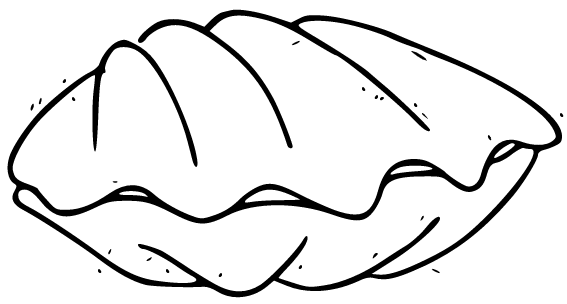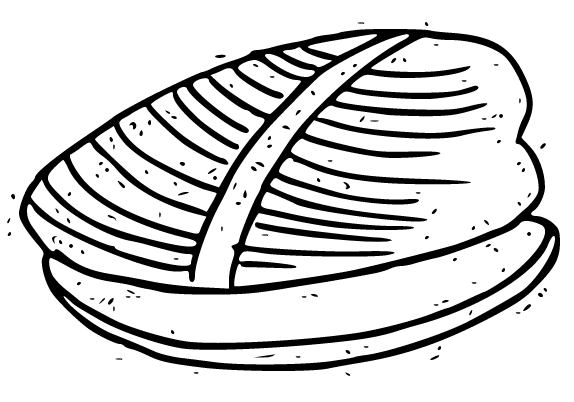-

-
The Discerning Mollusk's Guide to Arts & Ideas
-


Solio
Samira Negrouche
Seagull Books, May 2024
n the lyric essay “Who is Speaking,” Francophone Algerian poet Samira Negrouche imagines greater human consciousness as a poetic lifeworld in which “[s]ilence is a landscape and my ancestors know no borders.” Her most recent offering in English, Solio, draws us fully into this world. Each created in collaboration, one with musicians the other a choreographer, the two books feature dynamic speakers whose movements of music, meditation, and improvisation resonate through Carlson’s translations, which are attuned to their interconnections of tone, prosody, form, and perspective. The poems intuitively weave together impressions of other lives: natural, distant, imagined, ancestral—even ours on the impossible side of the page. These figures inhabit worlds woven of the same psychic thread, realizing a vision of silence as a cultivated habitat for interiority, the listener woven into a world made of listening.
The opening of “Quay 2|1” invokes this “unsaid elsewhere,” its psychic life source both “supported by doubt” and “an invisible thread between my fingers” (5). The speaker channels this imaginal world by entering it:
my arms cross seas
my roots have no anchor
my roots are out of season
don’t search for a trace of my voice
through you it gathers
through you it unfurls
I even accept the illusion
for us it’s a spark
a rousing twilight
a star we invent
a word we hide (6)
An invisible community is formed between speaker and addressees. The paradoxically shared interior “word” both contrasts hollowness and embraces emptiness as potential life:
the white surface isn’t the void
nothing isn’t the void
what’s unsaid about us
isn’t the void
I’m not afraid of what’s unsaid
nor of the breach concealing time (11)
This space becomes a life source for the speaker:
where I want to think of the nothing that opens
where I want to think of the space that remains
where I want to believe
that on a snowy trail
a breath lands
and sets down fear. (11)
This incantatory entry into the poem’s world accepts “the silence / that isn’t trying to fill itself / the silence in disorder” (37). The lyric world both suspends and engages the world of time, conflict, entropy. Through understanding of the worlds’ interdependent realities, the speaker is able to hear new inner life emerging:
it’s confusion
that makes us two
it’s between two
that time
is born
edgeless time
fleeting time
that creates the breach
the lasting breach
there where space
can finally be
touched
between
and between
that touches
there
where
to join.
Something quivers
between
that I don’t see
but that I know. (69–70)
Seeing through dualities involved with identity and chronology, the speaker opens the very emptiness through which unforeseen—or previously unseen—life may emerge.
Crucially, these meditative insights may apply concurrently to ontology and creativity. Vibrantly, perhaps reflecting their collaborative and performative genesis, the poems also live their central metaphors of form and practice:
I always move
on an uncertain thread
on a certain rupture
and I offer my voice
as I’d offer my cheek
I lengthen my stride
like brushing against
a threshold (13)
The speaker’s weaving of this world bypasses logical certitude, following an intuitive process to which “there’s nothing disordered / in what comes / how it comes.” The weaving equates with a dancer’s musical sense: “it dances right / it is announced” (47). This open sense of self as weaving and dancing forms a refrain in “Quay 2|1”:
I’m rooted in movement
time passes through me
beings pass through me
they are me
I am them
These passages evoke a participatory joy in uncertainty: “my steps don’t land / they dance / in the elsewhere” (73). In doing so, their genesis offers a rebirth to the world:
I’m rooted in movement
but when I’m rooted
in movement
I unroll
the horizon. (72–3)
This transitory overlapping of selfhoods or self-states—and its correspondence with ongoing worldmaking—deepen awareness of the physical world in “Traces,” along with its own instability:
All life is movement, it’s one of those obvious facts we
nevertheless should remember each day, be told each day,
and notice each moment.
The landscape is peaceful, it’s only conjecture. (84–5)
Being “rooted in movement,” in one way, simply means sitting still and really seeing how “everything moves, everything is a tangle of pulses, memories, presences, lives, questions.” The organic connection between external and interior witnessing in such observation is expressed through a kind of synesthesia: “I listen to silence with my eyes” (85). Such meditations rehearse the intuitive “roots” of the dancing, weaving, and writing so that their creations evoke being per se.
This self-infusing strange loop of consciousness—from meditative observation, to contemplative understanding, to performative creativity in the world—is evoked formally in prose sections using three slashes as breaks:
a finger dips into mercury /// a finger spools threads
/// a finger follows you /// a finger measures you and
in measuring you, it measures the distance /// a finger
scrutinizes you /// a finger asks you the question again
/// a finger spins the threads /// a finger shakes /// a
finger planes /// a finger wipes the corner of the eye ///
a finger extends the invitation /// a finger passes
through you. (95)
If the triple slashes are a play on textual commentary’s use of a slash to denote a line break, and two slashes a stanza break, this nuance also presents a riddle in form: What is more empty space than a stanza, yet compressed within a line? One answer would be consciousness itself, mirroring the paradox between the poem and the consciousness that formed it, that formed itself in meditative silence.
The “finger” that “Traces” these movements, metaphorically ranging from alchemical to sartorial, alludes to the classical metaphor of weaver as poet. However, exploration of the space between the poles of this metaphor discovers the poem’s interdependent creation of self and reader, the poem’s own interiority. It has invited us in to show us where we already are.
In “Quay 2|1,” consciousness recursively creating itself in its observations and productions presents as a river that “retraces / its flow / even / in the distance” (64), its enduring vitality evoked in the incantatory quickness:
even
in the distance
the river
swelling
in the distance
you arrive
the flows
merge
you arrive (64)
However, these apprehensions of interbeing do not arrive without shadows. “Traces” evokes the restlessness caused by—perhaps also causing—such profound consideration:
I don’t sleep at night. when silence falls, faces resurface
in my memory, also those I’ve never seen.
Faces are rooted inside me, all that passed by me during
the day and others I haven’t seen pass by.
I don’t sleep at night, my ears are so sensitive, they hear
all the din of the day and, at night, they regurgitate the
sounds, they analyze them. (77–9)
At times, the connection between poet and reader allows a symbiotic mode of processing such attendant anxieties, the second person serving as a conduit through which the speaker counsels both the reader and the worried aspect of the self:
You don’t want the momentum to worry you, you let
the momentum come to you and you think that every
momentum is life and death, that every momentum is at
first life, is at first a wager you make on life, a wager you
win on yourself. (103)
Corollary wisdom regards the abiding of one’s self-observations while observing the world:
You can’t tell how long it takes for the wave to calmly
break on you, the halo to move forward, the other part
of yourself to depart in the other direction.
The wave passes through you, it seems to pass through
you even as it fades into the horizon and you move for-
ward, alone, in the other direction.
You don’t know how long it takes to pass through your
body nor what dwells within you when you move for-
ward, alone, in the other direction.
Now that you’re walking alone again, you become the
wave, you become the deep breath of the wave. (106–7)
Deep identity is both inherently universal and endlessly mutable. The world flows over and through psyche as psyche moves through the world. The constructed identities of which we convince ourselves, though necessary to function in the social world, are secondary realities in the meditator’s witness of being itself, “rooted in the movement”—as well as the poet’s weaving and singing it back to itself.
From the perspective of the ego, such experiences of interbeing imply limitation even as they invite one to potential transformation: “If I speak to you, I speak through what we lack. This lack is our chance, the only true excuse for venturing out on the road” (111). With diligent presence, however, we may even become ancestors ourselves: “I came from an earlier time / to remind you of the promise of dawn” (112). Here, again, we return to the paradoxes between psychological and chronological time that help to structure these poems. In places, they also show how the speaker’s meditative identity, studied in emulation of the ancestors, and her temporal activity as a poet, weave together:
I came from that time that amasses horizons
and sifts through them
one by one, with care
giving each its measure. (112)
The senses of proportion in composition of crafted work and fluid perception bear an uncanny resemblance to one another—in ways that freely transfer to the reader’s fostering of their own practices. These poems, indeed, have moved far from the questions with which we opened, their process itself a fluid and resilient rooting in movement between individual, image, nature, other—between being and interbeing. It is only fitting to conclude with a passage that reads as their self-description:
I’m not afraid of emptiness
emptiness isn’t nothing
emptiness is along the thread
the uncertain thread
the invisible thread
on which I suspend existence
on which existence suspends me
wherever it happens
wherever it clings (14)

Michael Collins is the author of four collections of poetry, most recently Appearances. He teaches at NYU and the Hudson Valley Writers’ Center and is the Poet Laureate of Mamaroneck, NY.